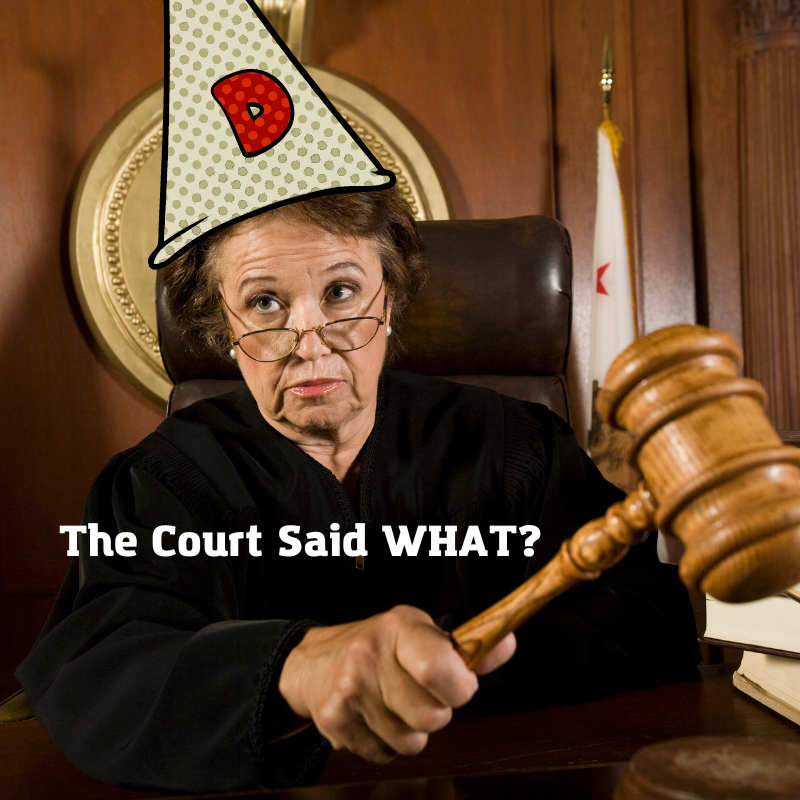It is getting bad inside my brain. A couple of articles went past my feeds talking about an arms seizure in MA and straw purchases. I started reading and immediately went to my court sources to get the actual court documents. Rather than trusting what the reporter had to say.
Weapons seizure uncovered Holyoke family’s love affair with illegally obtained firearms
—Teter v. Connors, No. 1:19-cv-00183, slip op. ¶ 11 (District Court, D. Hawaii)

It is a shitty picture of some lovely old weapons. I haven’t even attempted to identify any of them.
The box of stripper clips in the foreground is nice, the pile of magazines in the sink is interesting. I would be happy to take all of those off his hands.
Public personas aside, the Augustos stand accused in both federal and state courts for amassing a stockpile of guns ranging from World War II models to semi-automatic rifles and an Uzi. The elder Augusto is not legally authorized to possess any of them due to an old criminal conviction, a lawyer in the case says.
—id. ¶ 12
I’ll spare you the search, the Uzi they are referring to is a semi-auto version. There are no NFA items in the collection.
As always, the reporter is trying to induce a panic. Was this a large collection? Yes. If this was in a free state, the actual collection would not have been an issue. In MA, it is unlikely that they had registered all those firearms. Much less the magazines and ammo.
The nature and circumstances of the offense are serious, but include mitigating factors that weigh in favor of the requested below-Guidelines sentence. See 18 U.S.C. § 3553(a)(1). The offense is serious in that it enabled his father, Daniel A. Augusto, Jr., to add to his vast arsenal of hundreds of firearms, ammunition magazines, rounds of ammunition, firearms manufacturing equipment, and firearms paraphernalia. (D.3, at ¶ 5). As even the defendant conceded during his second interview with the Bureau of Alcohol, Tobacco, Firearms, and Explosives (“ATF”), many of the firearms were located outside the safes throughout the house because “it honestly got to the point where there was no room in the safes, so stuff just started going everywhere.” (D.3, ¶ 12(d)).
—id. ¶ 13
English is tricky. Were there hundreds of firearms? Were there hundreds of magazines? Were there hundreds of rounds of ammunition? Or did they just lump them all together to get scary numbers? The statement made in the court filing was that there were more than a dozen semi-automatic rifles … in one of the bathrooms …
—id. ¶ 18
The state is attempting to make it sound horrible, they are attacking this man for not having all of his guns in safes.
… obsessively collected firearms to the point that they could not store them safely.
—Differences Between Facial and As-Applied Challenges to the Constitutionality of a Statute - Bona Law, (last visited Aug. 10, 2023)
Right now, there are two loaded pistols and a dozen loaded rifles within feet of me that would not be considered “safely stored” in MA. If I still had the grandkid coming over, I’d store some of them differently.
Against this dangerous backdrop, two factors mitigate the defendant’s offense: first, he conducted all of his straw purchases for his father, rather than a stranger; and second, he did not benefit monetarily.
—Complaint – #1 in Teter v. Connors (D. Haw., 1:19-cv-00183), No. 1:19-cv-00183, slip op. ¶ 26,27
I didn’t know there was a “not for money” clause in the don’t buy guns for others.
… the defendant has recognized that his offenses were serious; they contributed to a highly dangerous situation inside his home; and he is better off never possessing firearms or ammunition again.
—
Andrew Teter v. ANNE E. LOPEZ, No. 20-15948 (Court of Appeals for the Ninth Circuit)This man is going to lose his Second Amendment protected rights because the government is infringing on his father’s Second Amendment protected rights.
I didn’t find what the father was convicted of doing that made him a prohibited person. It is pretty obvious that he has not been doing evil in a long time.
I’m watching the §922(g) cases wind their way to the Supreme Court. I believe that the court is going to spank the government hard. In Heller, in the dicta, they indicated that §922(g) was presumed to be constitutional. They didn’t clarify that “presumed” means, “We didn’t look at it. That is a question for another day.”
There is no historical regulation nor tradition of stripping The People of their right to keep and bear arms because they are not virtuous people. That is what §922(g) does.
This is just an example of how there are intended consequences.
Of note, I’ve not seen a single story come across my feeds of a person being convicted of straw purchases that was a bad person.
Maybe that’s because they are either getting a sweetheart deal OR they are getting so stitched up that they didn’t stack the federal gun crime on top.
Like this:
Like Loading...




